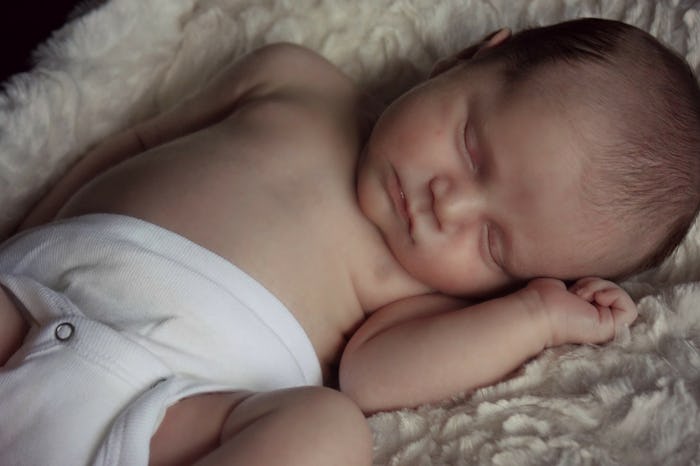Sudden Infant Death Syndrome, or SIDS, is a terrifying condition that medical professionals can't quite seem to explain. It's only natural that you'd want to do everything in your power to prevent against it, and find out about all the things you can do in the nursery to reduce the risk of SIDS.
According to the Mayo Clinic, SIDS is "the unexplained death, usually during sleep, of a seemingly healthy baby less than a year old." The cause is still unknown, and because researchers haven't been able to figure SIDS out completely, as a parent, it's important to take as many preventative measures as you can. Though SIDS prevention starts when your baby is still in the womb, by taking good care of yourself while you're carrying your child and doing a few fairly obvious things — such as not smoking cigarettes, not drinking, and avoiding second hand smoke, according to Medical News Today —there is a lot you can do after your baby is born to reduce thier SIDS risk. Though it can be tempting to keep adorable stuffed animals in your child's crib, wrap them up in cozy blankets, and more, you'll want to think twice, and read through this list of things you can do in the nursery to reduce the risk of SIDS.
1Put Sleeping Babies On Their Backs
The risk of SIDS is much higher for babies who sleep on their sides or their stomachs, according to WebMD. Both positions put your baby's face in the mattress, which can lead to an increased risk of SIDS. Everyone who cares for your baby, including babysitters, siblings, partners, parents, grandparents and more, should know to lay your baby on their back during sleep. Once your baby can roll over both ways on their own, they may not stay on their back. But as long as they can roll over both ways on their own, it's fine to let them choose their own sleep position.
2Use A Firm Mattress
A firm mattress is one of the best ways to help prevent SIDS for your infant, according to Newton-Wellesley Hospital. The presence of excessive soft material can increase the risk of SIDS. To confirm the safety of your baby's mattress or crib, you should contact the Consumer Product Safety Commission.
3Avoid Soft Bedding Or Bumpers
According to the American Academy of Pediatrics (AAP), blankets, pillows, and especially crib bumpers are both unnecessary and dangerous. The AAP has issued a safety warning against all types of crib bumpers, including those that claim to be SIDS safe. So before you deck out your baby's crib with the latest and greatest, think twice, and keep the decor to a minimum.
4Skip The Stuffed Toys

Your baby shouldn't sleep with stuffed toys or animals in their crib until they're at least 12 months, according to Baby Center. The more items in your child's crib, the more chance there is of suffocation. Keep things to a minimum to be safe.
5Keep Your Baby In Cool Clothes
CBS News reported that dressing your infant in light, comfortable clothes for sleeping is important, because overheating can raise a baby's risk of SIDS. Experts recommended putting just enough clothing on your baby to keep them warm without the use of covers, as covers can get tangled, and your baby can pull the blanket over their face.
6Use A Fan
Installing a ceiling fan, or using a fan in your baby's nursery is an easy way to protect your baby from overheating (which is a known risk factor of SIDS), according to The New York Times. Additionally, a study published in The Archives of Pediatrics and Adolescent Medicine, researchers reported that infants who sleep under a ceiling fan reduce their risk of SIDS by 72 percent. It's a simple measure that could help prevent SIDs.
7Use A Pacifier
The use of a pacifier when sleeping can help reduce the risk of SIDS, according to the Mayo Clinic. Though the Clinic recommends waiting until three to four weeks if you're breastfeeding, so that you don't disrupt your nursing routine. Try using a pacifier with your baby, and you may help prevent SIDS in the long run.
